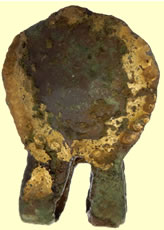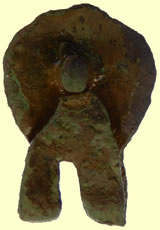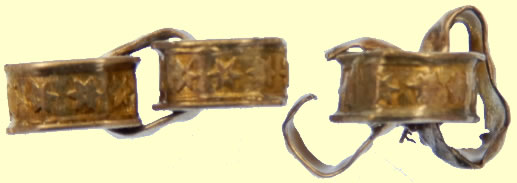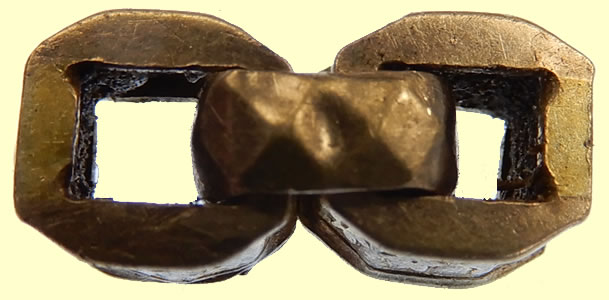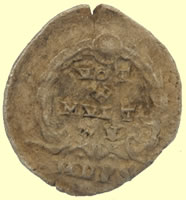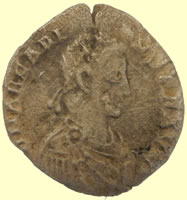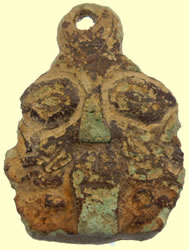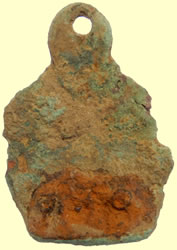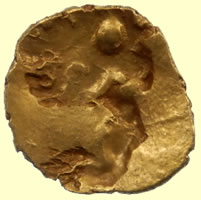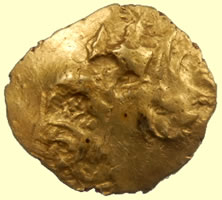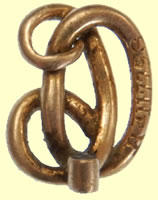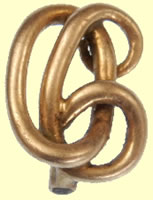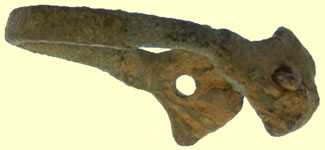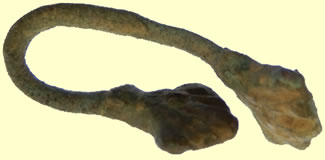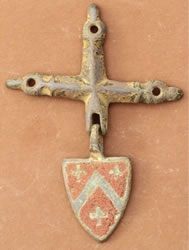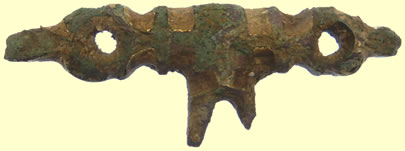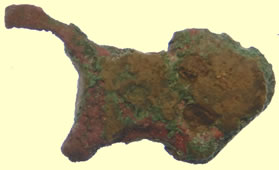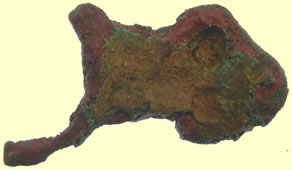

Metal detecting holidays in England with the World's most successful metal detecting club.
Twinned with Midwest Historical Research Society USA
2018 Feb Finds page |
Unique ID: DUR-1079B4
Roman prick spur A copper alloy Roman prick spur probably dating to the fourth century AD. The spur is made up of three projecting arms with approximately 90 degrees between each arm. On two of the arms are small loops and a break suggesting one on the third arm. There is a hexagonal area in the centre of the three arms and this is where the spur is attached. The spur is cone shaped. On each of the arms there is incised linear decoration. Spurs such as this example are thought to be of a British type and have been found in fourth and fifth century contexts. Although spurs are primarily military in character it is not unusual to find spurs of this type in rural locations. Similar examples have been recorded on the PAS database: DENO-8FB8E3 and LIN-D3B115. |
|||
Interesting bronze coin - reminds me of the Maravedis revalidated type coin ? Researching it.21mm, 4.34g 1600's Spanish Lion & Castle 8 Maravedis Cob |
|||
1797 George III milled gold third guinea 2.82g, 17.07mm |
|||
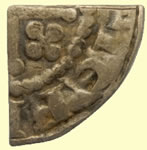 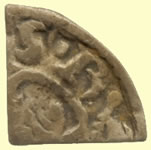 |
  |
||
| 1216 Henry III hammered silver short cross farthing | 1667 Isaac Colman, grocer of Colchester in Essex hammered copper trade farthing Norweb Ref 1171 |
||
  |
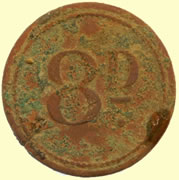 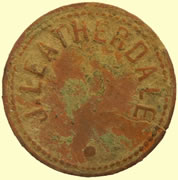 |
||
| 1247 Henry III hammered silver voided long cross half penny | Victorian 8 pence trade token | ||
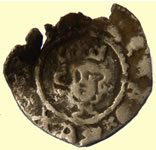 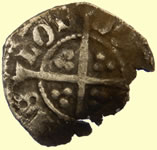 |
 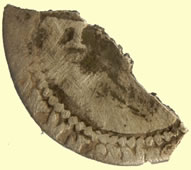 |
||
1377-99 Richard II hammered silver long cross half penny Obv *ARD x REX x ** Rev TAS/LON/DON - London mint |
1603 James 1st hammered silver sixpence | ||
 |
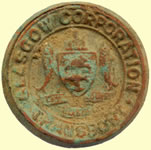 |
 |
|
| A Medieval (1250-1450) sheet copper alloy domed sexfoil belt mount | Glascow Corporation Transport 1st July 1894 - all lines owned by the Corporation but previously leased to the GT&OCoLtd |
1500-1700 mount | |
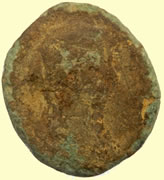 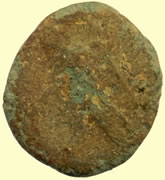 |
 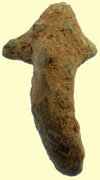 |
||
| 2ndC Roman bronze coin | 2ndC Roman fibular brooch | ||
2ndC Roman silver coin sent for ID It’s sort of unfortunate that it appears the finder began scraping off the encrustation because it tends to make the legends much harder to read at this point, but on the basis of what I think I see on the obverse, letters suggesting “…M ANTONINVS…” that can sort of be made out between 7:00 & 10:00 on the obverse, I think this may well be a Denarius of Marcus Aurelius, either late during the time he was Caesar to Antoninus Pius or early in his rule as Augustus – this based on the short, neat beard as opposed to the long and scraggly-tending beard in his later portraits. It might also be Antoninus Pius – I give a couple possible comparative examples below. Unfortunately, silver was never a specific goal for me in collecting, so the examples I have are sparse and nothing that matches yours exactly. The obverse of yur piece also appears to have been somewhat double-struck – you can see doubling in the nose – and that is seldom good news for legend readers. This is from early in M. Aurelius’ time as Augustus And yours stitched and sized in the same format: |
|||
 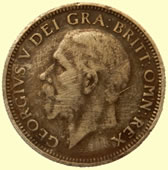 |
 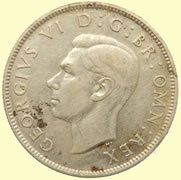 |
||
| 1927 George V milled silver shilling (12 pence) | 1945 George VI milled silver florin (24 pence) | ||
 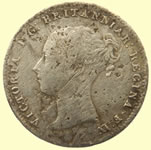 |
 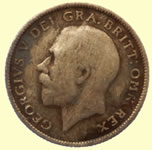 |
||
| 1859 Victoria milled silverthree pence | 1924 George V milled silver | ||
 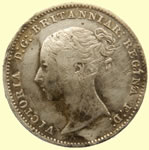 |
 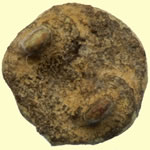 |
||
| 1851 Victoria milled silverthree pence | 16thC Tudor mount | ||
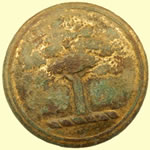 |
 |
 |
 |
| 19thC livery button | Medieval buckle | Victorian gilded pendant | Georgian watchg winder |
|
|||
| C10thC Saxon harness cheek piece | |||
 |
 |
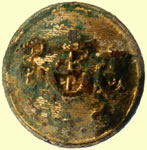 |
|
| Edwardian white metal brooch | Britain's Merchant Navy Generic Design Issue In use 1900 's onwards |
RN Master - 1807-1825 RN Ass't Master - 1807-1825 RN Volunteer Gr.II - 1824-1825 In use 1807 - 1825 |
|
  |
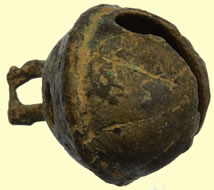 |
 |
|
1422-61 Henry VI hammered silver farthing, mascule after hENRIC Rosette- Mascule issue RM.1 Obv hENRIC v R ** Rev TAS/LON - London mint |
18thC crotal bell | 1400 -1600 mount The mount is sub-oval in plan and domed in cross section (D-shaped). The front face is convex and undecorated |
|
 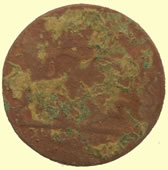 |
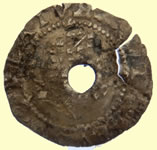 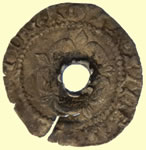 |
||
| 1764 Dutch copper coin | 1603 James 1st hammered silver penny | ||
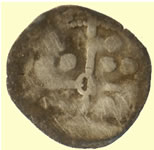 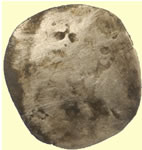 |
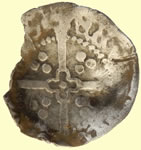 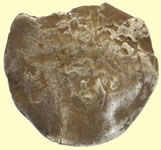 |
||
| 1461- 1470 Edward IV hammered silver penny - B at centre of reverse cross - Durham mint | Medieval hammered silver long cross penny - Quatrefoil with pellet at centre of reverse cross - York mint Rev S/EBO/RACI - York mint |
||
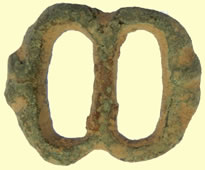 |
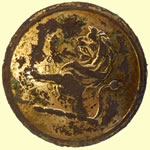 |
 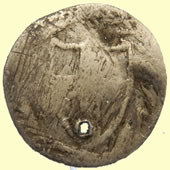 |
|
| 1500-1650 buckle | 19thC livery button | 1649 Commonwealth hammered silver half groat | |
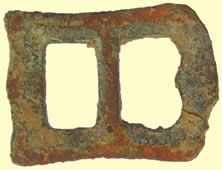 |
 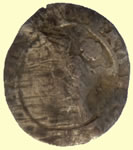 |
||
| 1500-1650 buckle | 1571 Elizabeth 1st hammered silver penny | ||
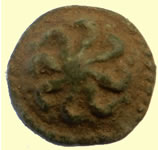 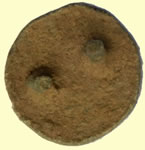 |
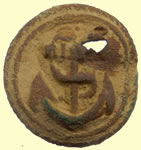 |
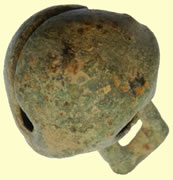 |
|
| 16thC Tudor mount | Britain's Merchant Navy Generic Design Issue In use 1900 's onwards |
18thC crotal bell | |
Interesting post medieval decorative pin - probably dates to 17thC
|
|||
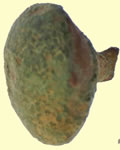 |
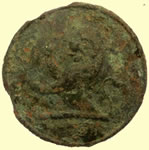 |
|
|
| 16thC Tudor button | 19thC livery button | c10th C Saxon harness fitting | |
 |
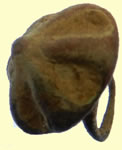 |
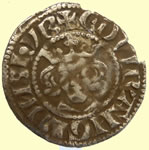 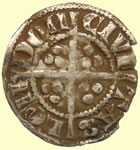 |
|
| Georgian nipple button | 16thC Tudor button | 1299-1300 Edward 1st hammered silver long cross penny - Class 9c - Closed C reversely barred N Obv +EDWR ANGLE DNS hYB Rev CIVI/TAS/LON/DON - London mint |
|
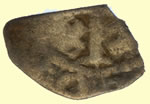 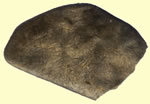 |
|
||
| 1158 -1189 AD Henry II hammered silver penny ' Tealby' cross and crosslet type half penny | Georgian silver pin | ||
  |
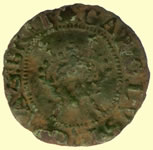  |
||
1216 Henry III hammered silver short cross half penny Rev ALTER.ON - Moneyer Walter |
Charles 1st Royal farthing - Harp Type 3 Maltravers 'rounds' 1634- 36 obv CAROLUS D G MAG BRIT Rev FRAN ET HIB REX |
||
  |
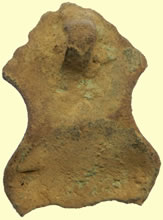 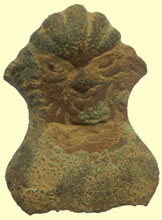 |
||
| 1634 Charles hammered copper rose farthing cut half | Medieval mount | ||
Very unsual hammered coin - not sure if it is silver or lead yet. Legend is not obvious pattern. Long cross and pellet type one side, another cross on reverse - needs a lot of cleaning up yet |
|||
  |
  |
||
1216 Henry III hammered silver short cross half penny Rev VND- London mint |
1575 Elizabeth 1st hammered silver sixpence | ||
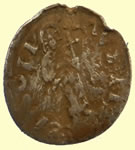 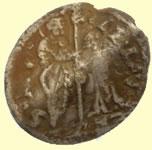 |
  |
||
1501-1521 Venetian soldino hammered silver coin - Leonardo Lauredan, Doge Rev: LAVS TIBI SOLI (Thee Alone be Praised). Haloed figure of Christ holding a cross. Obv: LE LAV DVX S M V (Leonardo Lauredan, Doge. St Mark of Venice.) Doge kneeling before Saint Mark. |
1205 Willam 1 The Lion - Scottish hammered silver half penny | ||
Stunning condition 1625 -32 Charles 1st gold Unite coin weight Obv CARO REX Rev Crown R XXs , Crown I counter mark 20 shillings Ref Withers 908 |
|||
  |
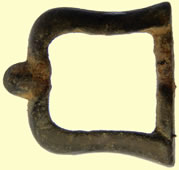 |
 |
|
1210-1215 King John hammered silver short cross half penny -Class V Rev VS ON.RV - Moneyer hENRICVS of Rhuddlan mint Wales |
Post medieval cast copper alloy asymmetrical buckle frame, some with with a pointed knop at the end of the loop The buckle dates from c.1575 - 1700 |
Britain's Merchant Navy Bliss Bros Ltd Rd 665050 |
|
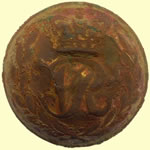 |
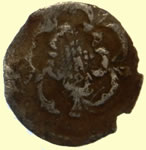 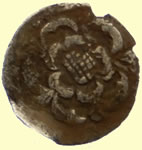 |
||
Royal Engineer Department
Staff officers button |
1625 Charles 1st hammered silver half penny - rose both sides, no legend type | ||
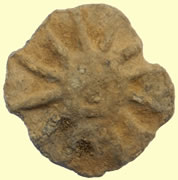 |
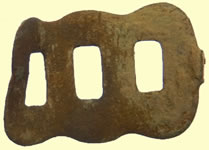 |
 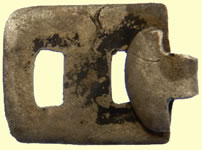 |
|
| 17thC lead mount | 18thC clog fastener | 18thC silver clog fastener | |
  |
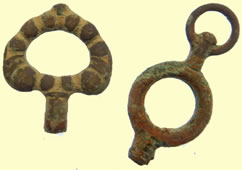 |
||
| 1920 George V milled sixpence | Georgian watch winders | ||
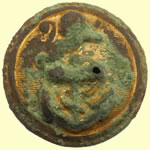 |
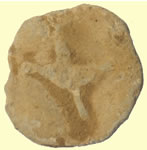 |
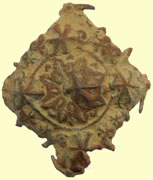 |
|
| George Burns ship line button ? | 17thC lead token | Edwardian mount | |
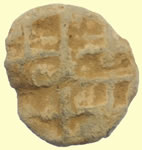 |
 |
  |
|
| 17thC lead token | Georgian watch winder | 20thC Gilded badge | |
 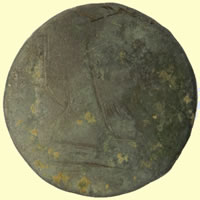 |
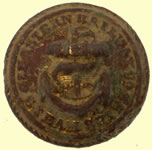 |
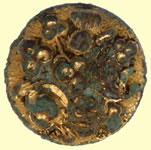 |
|
| Huge 18thC Louis XVI Double Sol of France copper coin | 1862- 1918 Gt Eastern railway and Steam ships button |
Georgian button | |
1464- 1470 Edward IV hammered silver half groat - Crown mint mark Obv EDWARD' DI GRA REX ANGL Z *** Rev CIVI/TAS/LON DON - London mint |
|||
Rarer 1554-1558 Philip and Mary hammered silver groat - Lis mint mark |
|||
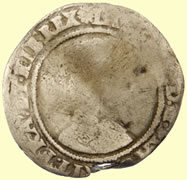 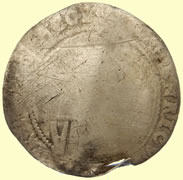 |
|||
1603-25 James 1st Irish hammered silver shilling - 2nd issue - escallop mint mark obv LACOBUS D.G.MAG BRIT FRA ET HIB REX Rev HENRICUS ROSAS REGNA IACOBUS |
|||
Roman silver hoard coins
Hoard 1 - 3.17g, 17mm Faustina the elder, wife of Antoninus Pius and mother of Faustina the younger. Posthumous issue by Antoninus pius, Faustina died 141 so it dates between 141-160. Reverse is too profoundly encrusted to determine type, although it might have the legend AVGVSTA (if so, the photo is upside-down) otherwise, it’s a legend ending in “AVG” and could be any of literally dozens of types.
Hoard 2 – 2.89g,18mm Trajan, 96-117, Mars advancing left carrying trophy and holding spear. Not enough of the reverse legend is clear to date it accurately, but the reverse reads something like this: P M TR P (xxx) COS (x VI) P P S P Q R – This seems to be the only piece which does not date to the Severan era in this batch.
Hoard 3 - 3.46g, 17mm Posthumous issue for Faustina the younger by her husband Marcus Aurelius – Faustina II died in 175 and M. Aurelius outlived her until 181 – so that’s the time frame, 175-181. Again, the reverse is so profoundly encrusted that it’s not possible to determine the reverse type
Hoard 4 – 2.48g,15mm Julia Domna, wife of Septimius Severus and mother of Caracalla (and Geta) so her coins’ time frame is 193-217. Obverse: [IVLIA] AVGVSTA. The reverse is IVNO [REGI]NA Juno standing left with peacock at her feet. This type was issued at both Rome and Laodicea (in the mid east) they can only be told apart by style – this appears to be a Rome mint product.
. (young) Caracalla ANTONINVS PIVS AVG / FELICITAS AVGG. Felicitas standing left holding caduceus and cornucopiae (the 2 G’s indicates two co-Augusti, Caracalla and Septimius) Mint of Rome 205 A.D., RIC 124, RSC 64. Roman 2nd/3rdC silver hoard Mark Lehman's initial ID below with poor quality pictures taken on the guys cell phones. I just sent him larger pictures for better ID. Okay, the top left (obverses) is Julia Domna, wife of Septimius Severus – probably issued by Severus, there is another group of coins in her honor struck by Caracalla. This appears to be the fairly common JVNO REGINA, Juno with peacock reverse, but the legend is only partial due to the smallish flan not presenting enough room to strike-up all of the reverse.
Hoard 6 - 3.06g, 18mm Caracalla as Caesar – 195-198. Obverse legend is probably [M AVR ANTON] CAES PONTIF. The reverse is PRINCIPI IVV[ENTVTIS] Caracalla in military garb standing left holding baton and scepter, trophy to his right. Mint of Rome, 197, RIC 13, RSC 505.
Hoard 7 – 3.18g, 18mm Septimius Severus, 193-212. [SEVERVS] PIVS AVG / [VICT] PART MAX Victory walking left holding wreath and palm, Mint of Rome, 204.
Hoard 8 - 3.17g, 17mm . I think what little of the portrait is visible suggests Antoninus Pius, 139-161 – reverse totally obscured but seems to be a figure (possibly Victory) standing or walking left holding object (wreath?) in outstretched right hand.
Hoard 9 &10 – 6.91g,17mm (one coin dia) only part of one coin’s obverse is visible, it looks like it may be “[A]NTON[…] indicating probably Caracalla, reverse is two standing figures and legend is too badly obscured to read, but I suspect it’s a duplicate of # 6 and the reverse is PRINCIPI IVVENTVTIS. 9b reverse is FELICITAS AVG, Felicitas likely standing left holding caduceus and cornucopiae and obverse is too well covered by 9a to be readable at all. Both pieces are almost certainly from the Severan era since that’s pretty much when all the others are on the time line, except for Trajan, of course, and Antoninus Pius. The Severan era included quite a few individuals, both male and female, between 193-238.
Mark Lehman's initial ID below with poor quality pictures taken on the guys cell phones. I just sent him larger pictures for better ID. Okay, the top left (obverses) is Julia Domna, wife of Septimius Severus – probably issued by Severus, there is another group of coins in her honor struck by Caracalla. This appears to be the fairly common JVNO REGINA, Juno with peacock reverse, but the legend is only partial due to the smallish flan not presenting enough room to strike-up all of the reverse. I’ll do what I can to describe and date them on a coin-by-coin basis, but the ones that are totally obscured by deposits and/or corrosion products that weren’t able to be ID’d before are still obscure.
|
|||
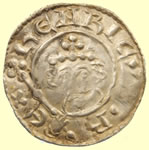 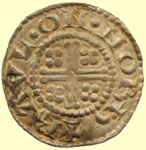 |
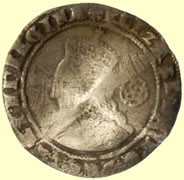 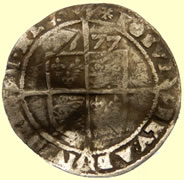 |
||
1180 - 1189 Henry II hammered silver short cross penny - Class 1b - pellet before Rex - No serifs to X- 2 left 5 right hair curls Obv hENRICVS.REX Rev + RAVL.ON.NORh - Moneyer Ravl of Northampton |
1577 Elizabeth 1st hammered silver sixpence - Eglantine mint mark | ||
Hoard 11 – 2.67g, 19mm Your photo of the reverse is upside-down – the legend is VOTA PVBLICA – who’s on the obverse is a bit more challenging question, although it looks like one of the youthful Severans.
Hoard 12– 3.07g, 20mm . Julia Domna, wife of Septimius Severus (193-217) IV[LIA] AVGVSTA draped bust right / HILARITAS Hilaritas standing left holding palm-branch and cornucopiae, Caracalla and Geta as children to her left and right. Struck 208, RIC 557; RSC 79
Hoard 13- 2.70g, 19mm Vespasian (69-79) [IMP C]AESAR VESPASIANV[S AVG] (counter-clockwise) laureate head of Vespasian right / TR POT X COS VIII naked radiate figure standing facing atop rostral column, struck 79. RIC (119 old vol II)- 1064-5; RSC 559. It should be obvious that this does nt belong to the same hoard/loss as all the similarly encrusted Antonine and Severan denarii from up to a century and a half later.
Hoard 14 – 3.28g,19mm Septimius Severus (193-211) SEVERVS AVG [PART MAX?] laureate head right / [VICT AETERN?] Victory hovering left holding garland above shield set on base. Struck 200, RIC 170; RSC 670.
Just sent Roman silver hoard coins 11 to 14 off to Mark Lehman for ID |
|||
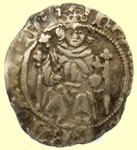 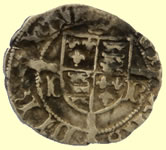 |
  |
||
1485 - 1509 Henry VII hammered silver sovereign penny - DR by shield Bishop Sherwood |
Taco'd 1247 Henry III hammered silver penny Rev ROB/ERT/ONC/ANT - Moneyer Robert of Canterbury mint |
||
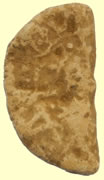  |
 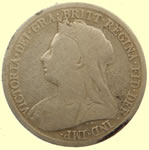 |
||
| Medieval boy bishop token | 1896 Victoria milled silver sixpence | ||
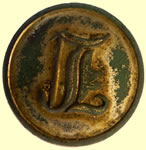 |
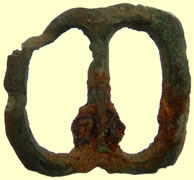 |
 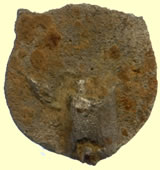 |
|
| 19thC livery button | 1500-1650 buckle | 16thC Tudor clothing fastener | |
Romano-British protected loop terret 'Protected loop terrets are usually considered to be Roman and dating to the late first and second centuries AD' |
|||
1422-27 Henry VI Annulet issue hammered silver groat (4 pence) Initial mark pierced cross obv hENRIC DI GRA REX ANGLIE Z FRANC Outer legend POSVI DEVM ADIVTORE MEVM Inner legend - VILLA CALISIE - Calais Mint
|
|||
16thC Tudor gilded silver clothing fastener - reported astreasure to museum |
|||
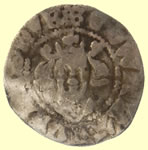 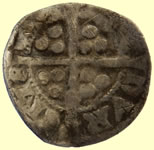 |
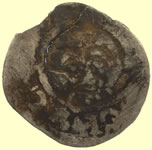 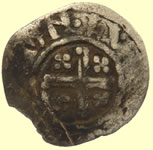 |
||
1307- 1327 Edward II hammered silver penny - Cross Moline - Durham Class 11a - one cross arm is crozier Episcopal coin Obv EDWAR ANGL DNS hYB Rev CIVE/TAS/**/DVR - Durham mint |
1216 Henry III hammered silver short cross penny Obv SREX*** Rev .ON. LV - London mint |
||
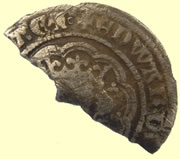  |
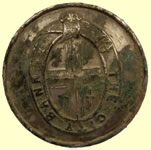 |
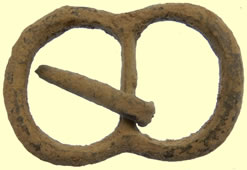 |
|
1334 - 51 Edward III hammered silver groat- Cross pattee Obv + EDWARD***** Rev RACI/CIVI - York mint |
20th C 'The City Bank' button | 1500-1650 buckle | |
Georgian spur |
|||
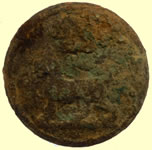 |
 |
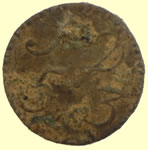 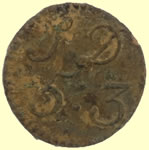 |
|
| 19thC liver button | 1881 The Royal West Surry regiment button Within a circle surmounted by the crown, the pashal-lamb. On the circle 'The Royal West Surrey Regiment'. Below the circle, a scroll inscribed 'The Queen's'. |
1770 George 1/4 gold guinea 5 shillings and 3 pence coin weight | |
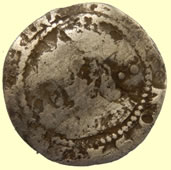 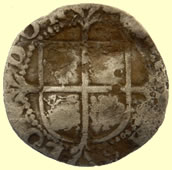 |
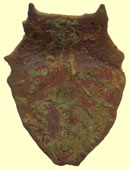 |
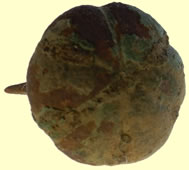 |
|
| 16thC Elizabeth 1st hammered silver groat | 17th C colthing fastener | A Medieval (1250-1450) sheet copper alloy (0.50mm thick) domed sexfoil belt mount | |
 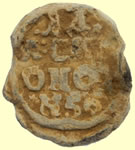 |
|
||
| 1793 Rusiian lead bale seal | 1805 George III duty paid mark bust silver spoon handle Maker RC Richard Crossley London 1782..1813 |
||
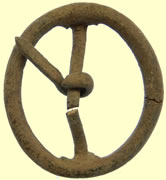 |
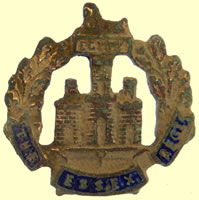 |
 |
|
| 17thC baldric buckle | WW II Essex Regiment badge | 15thC casket key | |
 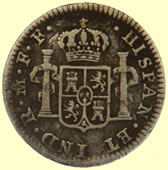 |
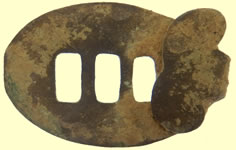 |
||
1781 Carlos III Spanish 1 Real milled silver coin Mexico FF mint Obverse : Laureate, armored and draped bust, facing right; "CAROLUS·III·DEI·GRATIA", (date) below between dots. Reverse : Crowned Arms between pillars; "HISPAN·ET IND·R.M.F.F |
18thC clog fastener | ||
Medieval badges Ref Mitchiner p244 939 - 941
|
|||
  |
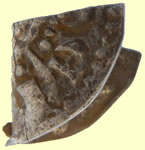 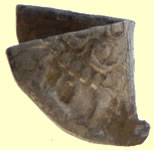 |
||
| 1634 Charles hammered copper rose farthing | 1247 Henry III hammered silver voided long cross half penny | ||
  |
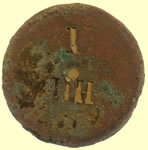 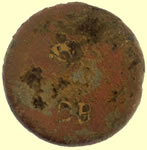 |
||
| 1247 Henry III hammered silver voided long cross half penny | 1770's 4 pence coin weight Obv D IIII Rev Makers initials |
||
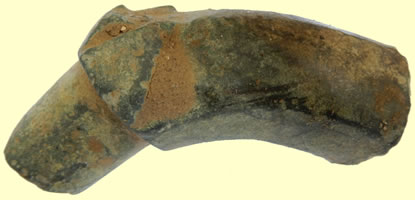 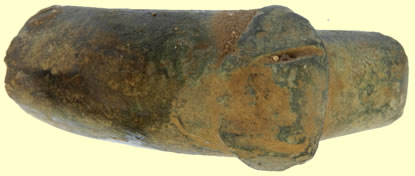 |
|||
| Medieval to Post-Medieval barrel tap and spigot (c. AD 1400 – c. AD 1550). | |||
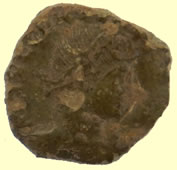 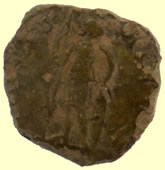 |
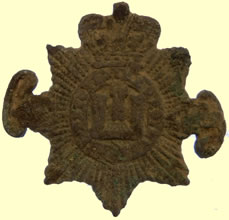 |
||
| Mid 4thC House of Constantine Roman bronze coin | WWII Devonshire Regiment cap badge | ||
Eary medieval gilded harness pendant hanger - circle design |
|||
Scottish medieval hammered coin star design gold chain - reported as treasure to museum Total weight of 3 links 1.58g |
|||
4thC Roman silver coin sent for ID This is a silique of Arcadius, 383-408 AD. It’s from the mint of Milan, 397-402 AD. This is quite a decent piece Mark |
|||
c10th Saxon stirrup mount - Type 9 human mask type |
|||
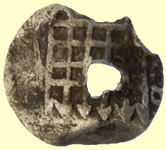 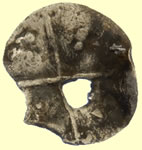 |
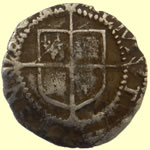 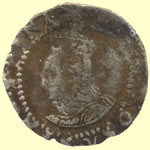 |
||
| 16thC Elizabeth 1st hammered silver half penny | 1565 Elizabeth 1st hammered silver half penny - Rose mint mark | ||
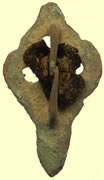 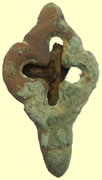 |
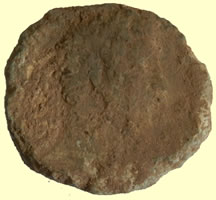 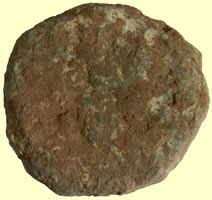 |
||
Late medieval mount |
Sestertius is either Antoninus Pius or Marcus Aurelius as Caesar (during the reign of Antoninus Pius). Their portraits are just too similar during that period - 139-161 AD | ||
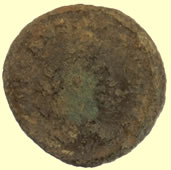 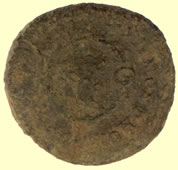 |
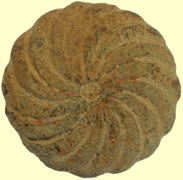 |
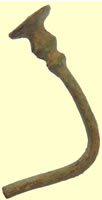 |
|
4thC Roman bronze with interesting obverse sent for ID I can’t tell you exactly who may be on the obverse, but this is a centenionalis with reverse: CAESARVM NOSTRORVM concentrically around wreath containing VOT / X(X) in two lines. I can’t tell the mint – your photo needs to be turned 90º counter-clockwise so the “o” shaped ornament at the top of the wreath comes into the 12:00 position. |
1500-1700 mount | 16thC Tudor seal spoon handle | |
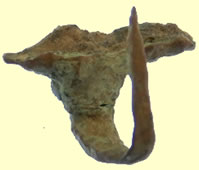 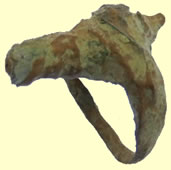 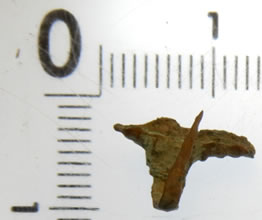 |
|||
| Smallest 2nd C Roman fibular brooch I have ever seen - 1cm !! | |||
  |
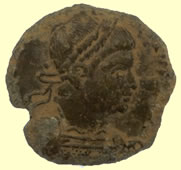 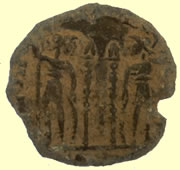 |
||
| 1247 Henry III hammered silver voided long cross half penny | Mid 4thC Roman House of Constantine bronze coin - two soldiers standing | ||
Unknown widget ? |
|||
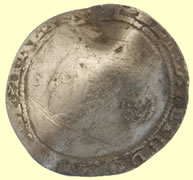 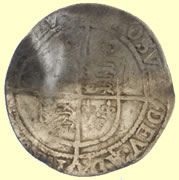 |
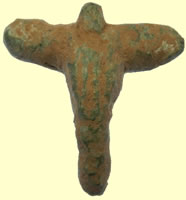 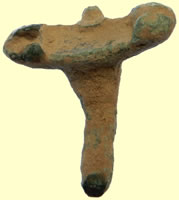 |
||
| 1575 Elizabeth 1st hammered silver sixpence | 2ndC Roman fibular brooch | ||
Interesting unknown tribe - researching it- hoard addendum coin Celtic gold qtr stater 1.38g,14mm 50 - 20 BC Essex Wheels quarter, VA 260, BMC 485 and 496, ABC 2231 |
|||
Gold link with very interesting markings ? 1.02g ME 117988 |
|||
 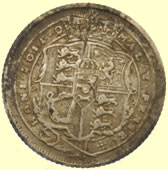 |
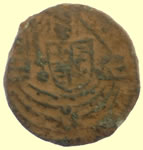 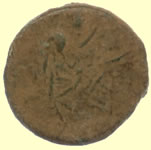 |
||
| 1817 George III milled silver shilling | 14th/15thC 1/2 Gold Ryal - King with sword and shield standing in a ship type coin weight | ||
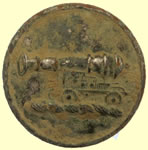 |
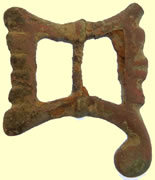 |
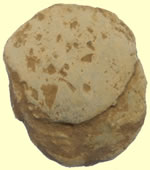 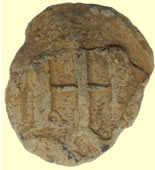 |
|
| 19thC livery button | Post-medieval copper alloy double-looped buckle frame, both loops trapezoidal. The very distinctive form is as Whitehead 2003 no. 527 c.1620 - c.1680 |
Post medieval lead cloth seal | |
|
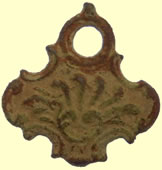 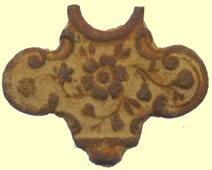 |
||
| Medieval clasp | Georgian watch winder | ||
 |
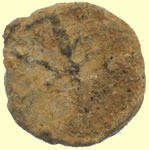 |
 |
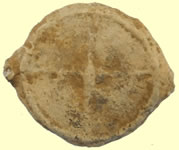 |
| 19thC British Railways button | 15thC lead token | WWII Royal Air Force button | 15thC lead token |
 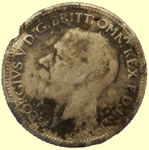 |
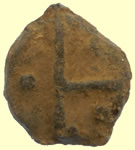 |
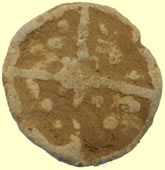 |
|
| 1929 George V milled silver sixpence | 15thC lead token | 15thC lead token | |
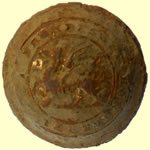 |
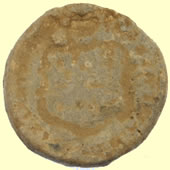 |
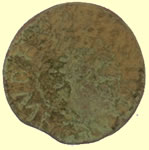 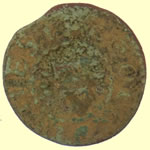 |
|
| Unknown military button | Post medeival lead weight | 17thC hammered copper trade farthing | |
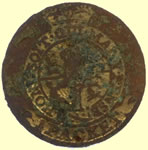 |
 |
||
One piece Navy buttons HONI SOIT QUI MAN Y PENSE PACKET Honi soit qui mal y pense (Old French: shame upon him who thinks evil of it) RN - Packet Service c.1800-1811 |
c1798-c1812 (1st) Tower Hamlets Militia TH either side of Tower image Note The 2nd Tower Hamlets Militia who were formed in 1797 and by 1832 had changed name. This is the third of six known types to the unit. |
||
 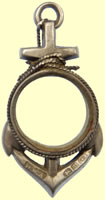 |
 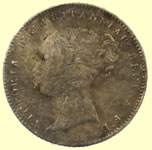 |
||
1893 Victorian silver pendant - datye letter T Maker H.W.A H W Ashford 1884 1891..1913
|
1849 Victoria milled silver four pence | ||
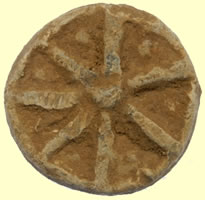 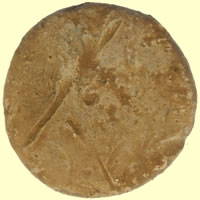 |
 |
||
| Medieval lead trade weight | 18thC toy cannon | ||
Medieval harness pendant hanger |
|||
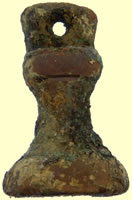 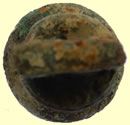 |
 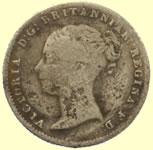 |
||
| Georgian bell trade weight | 1840 Victoria milled silver four pence | ||
 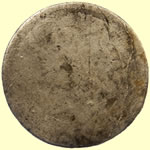 |
 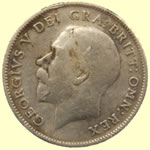 |
||
| 1820 George V milled silver sixpence | 1914 George V milled silver sixpence | ||
  |
|
||
| 1925 George V milled silver sixpence | Medeival buckle | ||
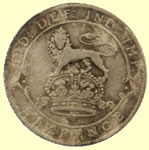 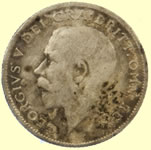 |
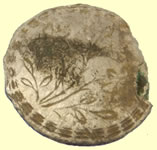 |
||
| 1920 George V milled silver sixpence | Georgian silver button | ||
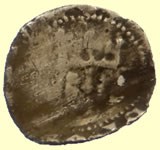 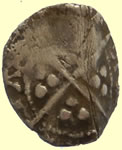 |
  |
||
| Medieval hammered silver penny | 1216 Henry III hammered silver short cross half penny | ||
  |
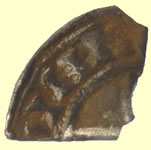 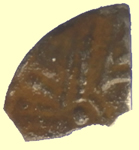 |
||
12th C Medieval hammered silver penny - Continental Sterling imitation- Enigmatic Crockard Obv +IxCOMS *** Rev VAL/MO |
Saxon hammered silver cut half penny fragment - sent to Fitzwilliam museum for recording and ID | ||
See new 2018 March Finds Page |
|||
 |
|||
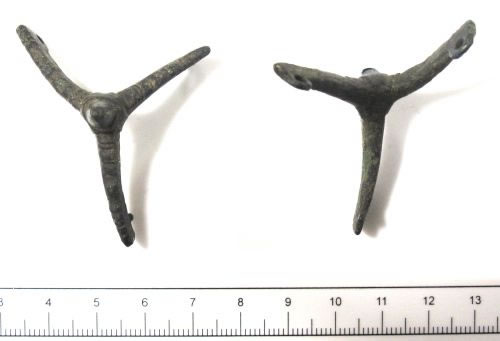
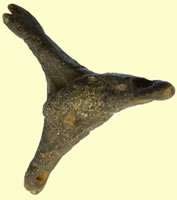
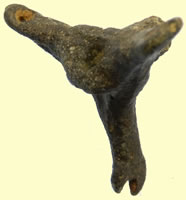
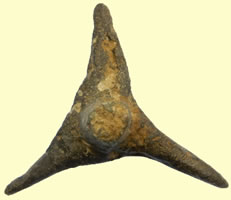

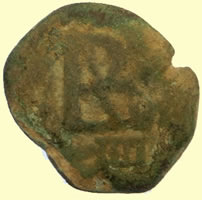

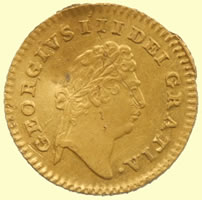
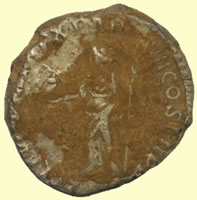
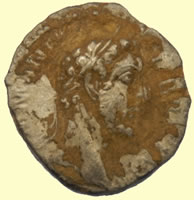



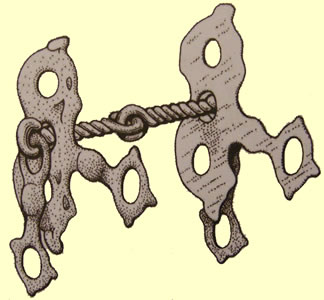
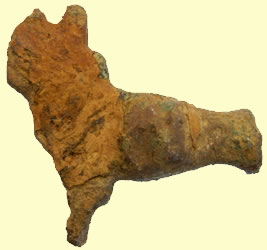
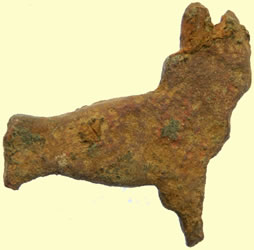






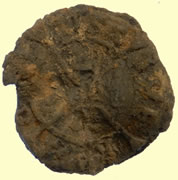
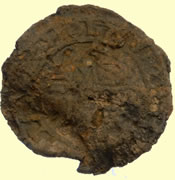
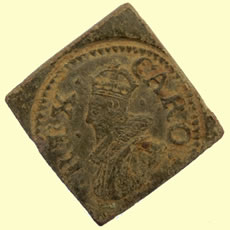
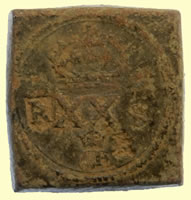
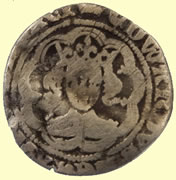
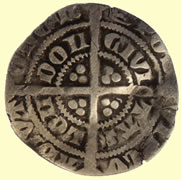

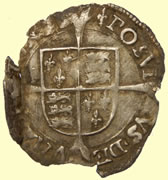
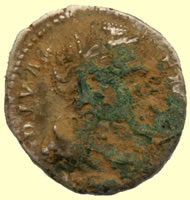
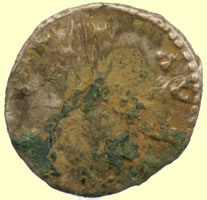
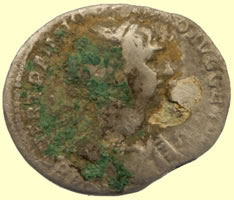
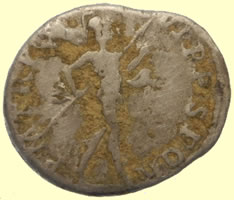
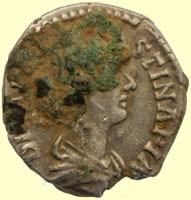
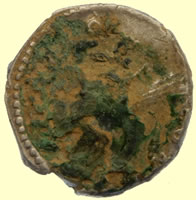
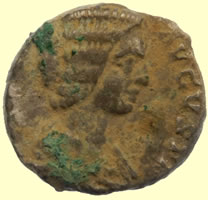
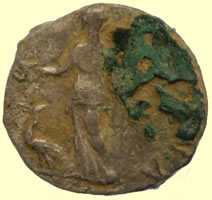
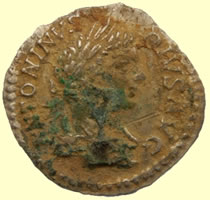
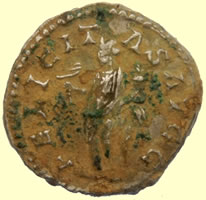
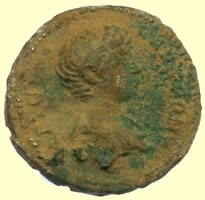
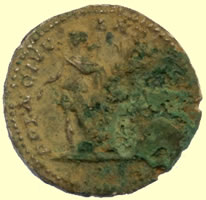
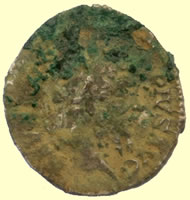
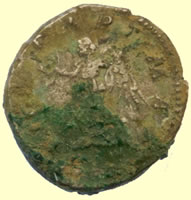
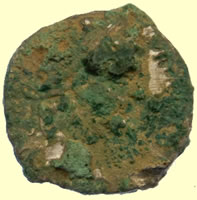
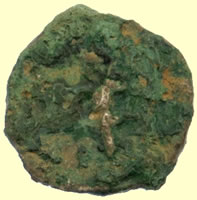
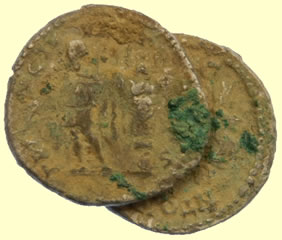
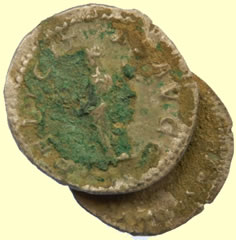
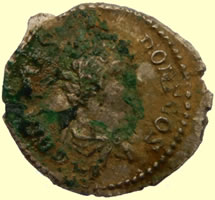
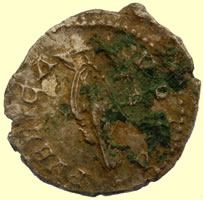
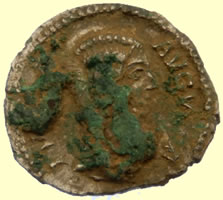
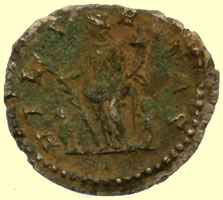
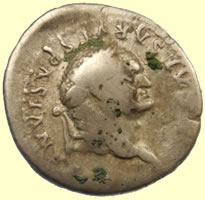
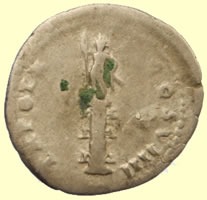
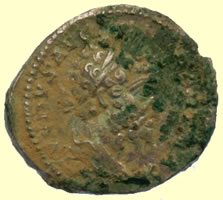
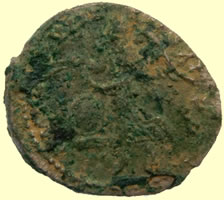
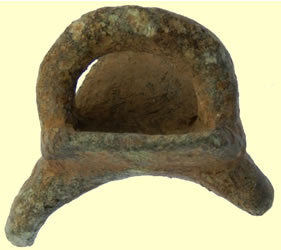
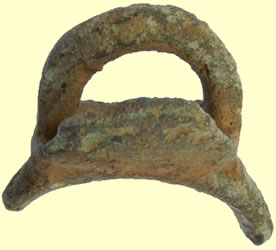
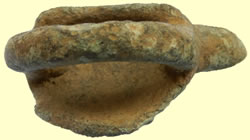
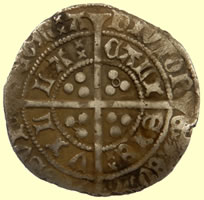
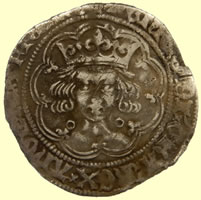
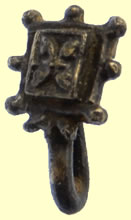
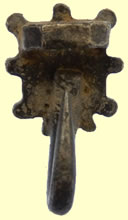

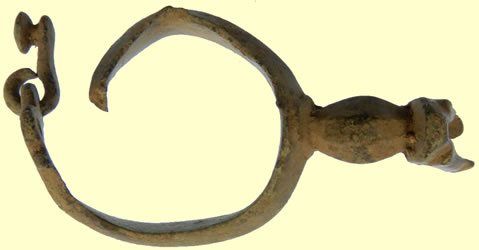
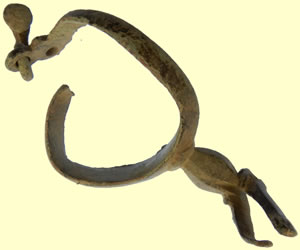


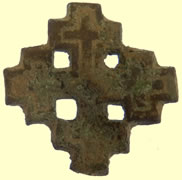
 'A badge for a Knight of the Order of the Holy Sepulchre in bronze and dating somewhere around C13/14th possibly very slightly later . This is a very scarce item and it relates to The Equestrian Order of the Holy Sepulchre of Jerusalem being a Catholic chivalric order of Knighthood that traces its roots to Godfrey of Bouillon, principal leader of the First Crusade. According to reliable sources in the Vatican and Jerusalem, it began in historical reality as a mixed clerical and lay confraternity (association) of pilgrims which gradually grew around the most central of the Christian holy places in the Middle East, the Holy Sepulchre or the tomb of Jesus Christ.This would have been a pin for a member of the order , there is a mark on the reverse where the original pin would have been fixed '
'A badge for a Knight of the Order of the Holy Sepulchre in bronze and dating somewhere around C13/14th possibly very slightly later . This is a very scarce item and it relates to The Equestrian Order of the Holy Sepulchre of Jerusalem being a Catholic chivalric order of Knighthood that traces its roots to Godfrey of Bouillon, principal leader of the First Crusade. According to reliable sources in the Vatican and Jerusalem, it began in historical reality as a mixed clerical and lay confraternity (association) of pilgrims which gradually grew around the most central of the Christian holy places in the Middle East, the Holy Sepulchre or the tomb of Jesus Christ.This would have been a pin for a member of the order , there is a mark on the reverse where the original pin would have been fixed '